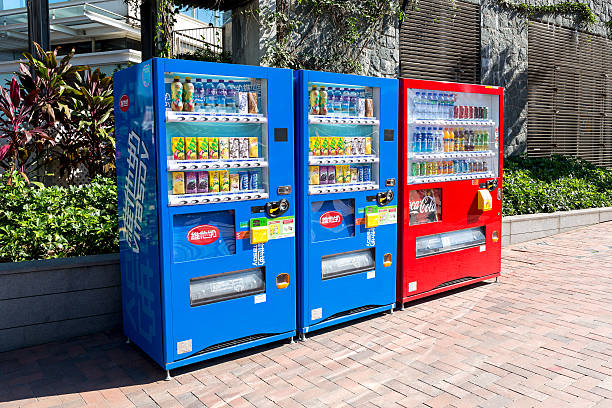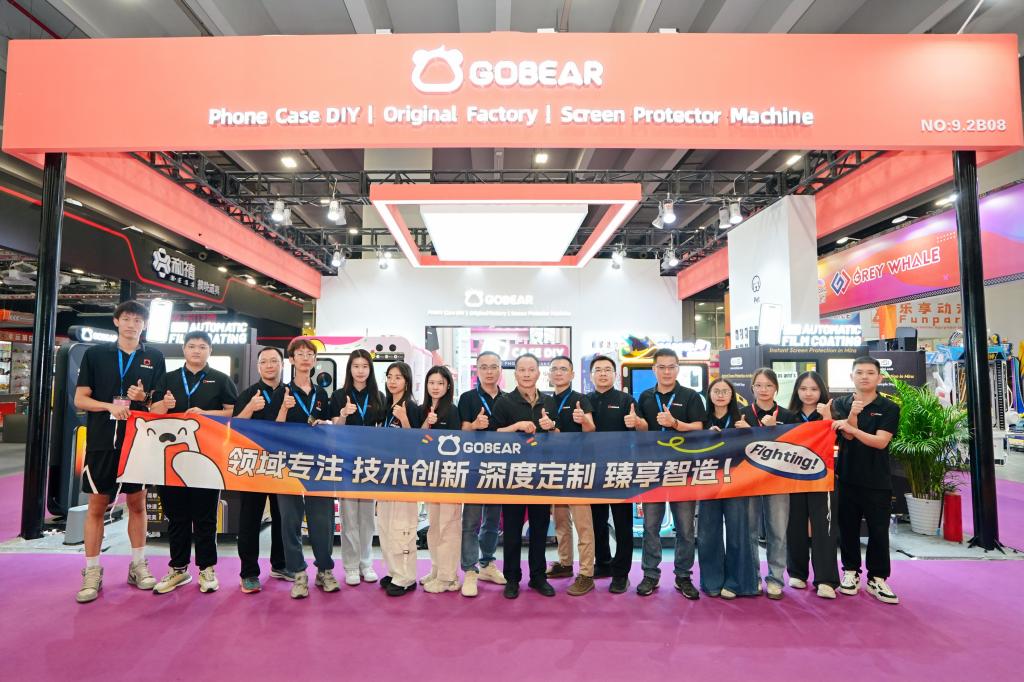How Automated Vending Machines Are Revolutionizing the Industry?
Explore how automated vending machines are transforming the vending machine industry. Partner with Gobear to optimize yo...
Exploring different vending machine business models helps you understand how to structure your operation for profit and growth. In this guide, you will learn about each model and its requirements, advantages, and challenges. By understanding these options, you can match your goals, resources, and risk tolerance to the approach that works best for you.

Running a vending operation solo gives you complete control over every decision—from product selection and branding to placement and pricing. You capture all margins, but also assume all costs and operational responsibilities. Success depends on disciplined management, smart sourcing, and a scalable plan that balances efficiency with profitability.
Owning and operating everything yourself lets you tailor products, branding, and pricing to each location. You can adjust offerings quickly based on local demand, trial niche products, and match selections to the demographics at each site—premium snacks for offices, specialty goods for tourist areas. Strategic experiments help uncover new revenue opportunities while keeping your machine competitive.
Expect to invest $2,000–$10,000 per machine, depending on features and build quality. Higher-grade units reduce downtime and improve customer experience. Beyond startup costs, you manage inventory, maintenance, and site commissions. Tracking sales data allows you to reinvest in high-performing machines and relocate underperformers for better yield, keeping your investment aligned with returns.
Your responsibilities cover site negotiations, compliance, restocking, maintenance, and cash collection. Consistency in these tasks directly affects both revenue and customer satisfaction. Streamlined processes, reliable supplier relationships, and clear schedules help maintain smooth operation across all machines.
Forming an LLC or corporation protects your personal assets. Integrating remote monitoring and cashless payment systems reduces site visits, speeds troubleshooting, and enhances convenience for buyers. Using technology strategically keeps operations agile, improves customer experience, and ensures your machines stay relevant in modern environments.
CaseDIY Machine offers AI-powered vending kiosks that print premium personalized phone cases in about 2 minutes. With no monthly fees and remote management, it’s designed to deliver fast returns by attracting steady sales in high-traffic locations. Explore how easy it is to add a new profit stream to your business.


For entrepreneurs and investors looking for faster market entry, the franchise vending machine model offers a proven, lower-risk path. You operate within a system with established brand equity, supply chains, and standardized procedures, making deployment quicker, scaling easier, and operations more predictable than starting independently.
By joining a franchise, you acquire a ready-made business under a recognized brand. This includes vending machines, branding assets, vetted suppliers, recommended site locations, and integrated technology. You can start generating revenue faster because much of the setup complexity is already handled. The system allows you to focus on performance, product management, and operational efficiency instead of building infrastructure from scratch.
The franchise model supports semi-passive income with minimal staffing. Machines placed in high-traffic spots operate around the clock, requiring only periodic servicing. This makes managing multiple locations practical without increasing payroll. Expanding your footprint is straightforward — profits can be reinvested to grow the fleet, taking advantage of steady consumer demand for convenient products.
Franchisors typically provide exclusive territories to avoid competition within the network. They offer training on machine operation, product management, and sales strategies. Marketing support keeps brand visibility high, while remote management platforms provide real-time inventory tracking, pricing adjustments, and performance insights. Combined with maintenance guidance, these resources help you achieve operational consistency and profitability with reduced hands-on effort.
Franchise networks often carry diverse categories, from healthy snacks and beverages to electronics, flowers, and personal care items. You can tailor offerings to local demand, for example, hydration solutions in gyms or tech accessories near transit hubs, ensuring high turnover and healthy margins.
In vending operations, a skilled location partner can significantly increase sales by securing high-traffic, visible sites. Instead of managing machines directly, you focus on sourcing and negotiating access to locations where vending will perform best. In B2B contexts, this model reduces asset exposure and creates repeatable revenue through strong relationships and strategic site optimization.
As a location partner, you act as a market scout, prioritizing foot traffic, visibility, accessibility, and demographic alignment over property costs. By analyzing traffic data and customer behavior, you can place machines where the target audience is most likely to purchase. Balancing the needs of property owners with operator goals ensures reliable revenue and builds long-term, value-driven partnerships.
Once a site is identified, you negotiate commercial terms. Most agreements include property owners receiving 10 to 25 percent of sales. Discuss responsibilities for maintenance, contract duration, and product selection tailored to local demand. Trial placements of three to six months can reduce perceived risk for owners. Flexible assortments and commission arrangements help maintain alignment with changes in traffic patterns or customer preferences.
Every placement must comply with local health, safety, and permit requirements. Clear contracts protect both parties and build trust. Position your vending offering as a turnkey profit source, delivering full service with no effort required from the owner. Co-branding opportunities and joint promotions can extend marketing impact and strengthen the partnership.
This is an asset-light growth model that emphasizes site acquisition and relationship management rather than machine ownership. It lowers upfront capital requirements and allows you to scale quickly by replicating successful placement strategies. By focusing on multiple sites without overextending operational resources, you can adapt your portfolio to shifting demand while maintaining consistent growth across retail hubs, transit points, and entertainment venues.
| Dimension | Independent Operator | Franchise Model | Placement / Location Partner |
|---|---|---|---|
| Control over operations | Full control of products, pricing, placement, and branding | Limited control, must follow franchise rules | Focus on site placement, operator manages machines |
| Startup investment | High, covers machines, inventory, licenses, and setup | Moderate, franchise fee plus equipment and inventory | Low, primarily site acquisition and negotiation |
| Operational responsibility | High, handle everything from restocking to maintenance | Medium, support from franchisor reduces workload | Medium, focus on securing sites and agreements |
| Risk exposure | High, all costs and liabilities fall on you | Medium, shared risk with franchisor | Medium, depends on partner/operator reliability |
| Revenue potential | Full profit per machine | Shared profits, scalable through franchise network | Shared profits, scalable through multiple placements |
| Scalability | Limited by personal capacity | Easier with franchise support and network | Rapid, asset-light growth possible across locations |
| Support & Training | Minimal, rely on self-management | Strong, includes training, marketing, and operational guidance | Limited, mainly advisory from operator or agreements |
| Ideal for | Entrepreneurs seeking full control and flexibility | Investors or operators wanting lower-risk entry with support | Operators focused on site acquisition without owning machines |
Choosing the right vending machine business model shapes your operational control, growth potential, and financial risk. Your decision affects liability, tax obligations, and day-to-day management, so it’s important to align the model with both your immediate priorities and long-term targets.
Start by considering what matters most to you. Do you want full control over every decision and product choice, or would you prefer a structured system with support and proven processes? Are you focused on rapid expansion, or is minimizing upfront investment a priority? Understanding your goals and available resources helps narrow down the models that make sense for you.
Each model comes with trade-offs. Running independently offers maximum freedom but requires hands-on management and full financial responsibility. Franchises provide guidance, marketing, and training, but limit control over product mix and branding. Placement-focused partnerships reduce capital exposure but demand strong negotiation skills and relationship management. Knowing how much risk you’re willing to take and how much time you can dedicate daily will guide your choice.
Think about where you want your business to go. If you aim to grow quickly across multiple locations, franchises, or placement partnerships may accelerate expansion. If you prefer a smaller, highly controlled portfolio, independent operation might be a better fit. Matching your business ambitions with the inherent strengths of each model ensures your growth plan is realistic and achievable.
Use your answers to these questions about priorities, resources, risk tolerance, and growth goals to evaluate which model aligns best with your situation. Consult experienced operators, review case studies, and if necessary, seek advice from business advisors. Choosing the right model from the start sets you up for smoother operations, higher profitability, and long-term success.

Expanding your vending machine business requires tactics tailored to the model you operate. You need to balance growth speed with operational control, capital allocation, and securing high-value locations. By learning from successful high-traffic sites, you can focus resources effectively and avoid common scaling pitfalls.
As an independent operator, your fastest growth comes from adding machines while refining route logistics to ensure efficient servicing. Expansion without careful planning for delivery schedules, inventory replenishment, and maintenance can quickly reduce margins. Match deployment with your manpower and vehicle capacity to maintain service quality and customer satisfaction.
Franchising allows rapid territorial growth by combining comprehensive training, clear operational guidelines, and standardized sourcing. Franchisees act as brand ambassadors while centralized technology tracks performance and maintains a consistent customer experience. This approach leverages shared capital and local insight, making nationwide expansion achievable, but requires strong auditing and ongoing support to protect brand value.
Working with universities, corporate campuses, or facility managers provides fast access to high-value locations without lengthy individual negotiations. Bundled service agreements and revenue-sharing arrangements create mutual benefit. Success depends on disciplined account management, customizing products and promotions for each partner’s audience, and ensuring location agreements remain protected from competitors.
AI-driven inventory management, remote diagnostics, and targeted marketing are now key to scalable vending operations. These tools reduce unnecessary trips, forecast stock needs accurately, and enable real-time adjustments to promotions. By integrating these systems, you can maintain service quality, focus capital where it delivers the best returns, and quickly identify underperforming sites for resource reallocation.
No matter which model you choose, successful growth depends on disciplined capital allocation. Expanding too quickly can destabilize operations. As your network grows, complexity increases, requiring lean workflows and capable teams. High-traffic locations remain competitive, so act decisively during negotiations. Consistent quality control is essential, as service lapses can quickly undermine customer loyalty and hard-won revenue.
When choosing a vending model, think about your available capital, how much you want to manage, and the type of locations you want to serve. Independent ownership gives you full control and keeps all the profit, franchises provide brand support and easier scaling, and placement partnerships reduce your asset risk while relying on strong agreements.
Make decisions based on site quality, compliance, and long-term growth to keep your operations efficient and profitable. With CASE DIY, you can explore phone case vending solutions that fit your chosen model. Their machines simplify operations and help you reach high-traffic locations quickly.
Explore CASE DIY solutions to enhance your vending strategy and maximize returns across any business model.
Options include direct ownership (independent or franchise), leasing from suppliers, or revenue-sharing partnerships with high-traffic location owners. Ownership determines responsibility for stocking, servicing, and revenue allocation. Automation lowers staffing needs and allows remote oversight, while manual operations give closer control over product quality and customer service.
Franchises offer brand visibility, training, and established systems but require fees and compliance with corporate policies. Independent ownership gives full control over placement, product mix, and pricing, but also means bearing all operational and financial risk. Decide based on available capital, your management capacity, and readiness to build and market your own brand.
Owning machines delivers maximum control and profit potential but requires higher upfront costs and ongoing oversight. Leasing lowers entry costs and shifts maintenance to the supplier, though margins tighten. Partnering with location owners secures strong foot traffic but reduces net revenue. Automated systems cut labor costs, provided technology and support infrastructure remain reliable.
Assess available funds, operational bandwidth, and desired involvement level. Determine whether your strategy targets passive income or active management. Evaluate location acquisition potential and the usefulness of tools such as remote monitoring. Align your product mix with your target market, deciding if customization is needed or if standardized offerings suffice.
Implement a cloud-based management platform to monitor sales, inventory, and performance in real time. Use automated restocking triggers from usage data to reduce downtime. Maintain a preventive service schedule and resolve technical issues quickly. Review analytics regularly to relocate underperforming machines or adjust product mixes for stronger returns.
Tell us about your business goals, and our experts will provide a tailored solution and a detailed profitability report. Let's start building your new revenue stream together.